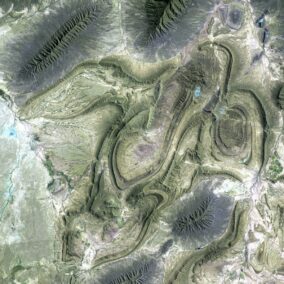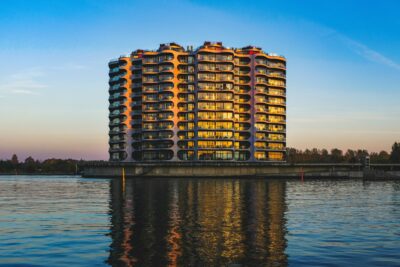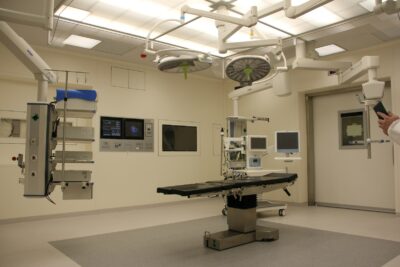Optimizing Flight Paths with PBN Procedures
Increasing Airspace Capacity
The integration of performance-based navigation (PBN) procedures represents a significant advancement in aviation technology, offering a more precise and efficient way to navigate airspace. Unlike traditional navigation methods, which rely on ground-based infrastructure, PBN utilizes satellite positioning and onboard avionics to define precise flight paths based on aircraft performance capabilities. By optimizing flight paths and reducing reliance on ground-based navigation aids, PBN procedures enhance airspace efficiency, increasing capacity and reducing delays.
In the dynamic aviation landscapes of Saudi Arabia and the UAE, where airspace congestion is a growing concern, the adoption of PBN procedures is essential for meeting the demands of modern air travel. These nations recognize the importance of investing in advanced navigation technologies to support their expanding aviation industries while ensuring safety and efficiency. By embracing PBN procedures, airlines and air traffic management authorities in Riyadh, Dubai, and beyond can unlock the full potential of their airspace, accommodating growing demand while minimizing delays and enhancing overall efficiency.
Reducing Delays and Enhancing Efficiency
One of the key benefits of PBN procedures is their ability to reduce delays and enhance overall airspace efficiency. By enabling aircraft to fly more direct routes and optimize their flight profiles, PBN procedures minimize unnecessary diversions and shorten travel times. This not only improves the passenger experience but also reduces fuel consumption and emissions, contributing to environmental sustainability. In addition, by increasing airspace capacity and reducing congestion, PBN procedures allow air traffic controllers to better manage traffic flow, minimizing delays and enhancing the predictability of air travel.
Furthermore, the integration of PBN procedures aligns with broader efforts to modernize and harmonize global airspace management. In Saudi Arabia and the UAE, where collaboration between airlines and aviation authorities is key to ensuring seamless air travel operations, the adoption of PBN procedures fosters greater coordination and efficiency. By standardizing navigation procedures and embracing technological innovations, these nations can position themselves as leaders in airspace management, setting new standards for safety, reliability, and efficiency in the global aviation industry.
Leadership and Collaboration in Airspace Management
Effective leadership and collaboration are essential for driving the successful implementation of PBN procedures and maximizing their benefits. Business executives, mid-level managers, and entrepreneurs in Saudi Arabia and the UAE must champion the adoption of PBN procedures within their organizations, recognizing the value of investing in advanced navigation technologies. By fostering partnerships with aviation authorities and supporting ongoing research and development efforts, companies can play a pivotal role in shaping the future of airspace management.
Moreover, collaboration between government agencies, airlines, and industry stakeholders is crucial for ensuring the seamless integration of PBN procedures into the broader aviation ecosystem. By working together to address regulatory challenges and operational complexities, stakeholders in Saudi Arabia and the UAE can accelerate the adoption of PBN procedures and realize their full potential in enhancing airspace efficiency. This collaborative approach underscores the importance of shared vision and collective action in driving progress and innovation in the aviation industry.
In conclusion, the integration of performance-based navigation (PBN) procedures represents a transformative leap forward in airspace management, offering unparalleled opportunities to enhance efficiency and capacity. In Saudi Arabia, the UAE, and beyond, stakeholders are embracing PBN procedures as a catalyst for modernizing their aviation infrastructure and meeting the evolving needs of air travel. By investing in leadership, collaboration, and innovation, these nations can unlock the full benefits of PBN procedures and pave the way for a more efficient and sustainable future in aviation.
Conclusion: Shaping the Future of Air Travel
In conclusion, performance-based navigation (PBN) procedures are reshaping the landscape of air travel, ushering in a new era of efficiency and capacity. Through strategic leadership and collaboration, stakeholders in Saudi Arabia and the UAE are driving progress towards a future where airspace management is optimized, delays are minimized, and air travel is safer and more efficient than ever before. By embracing PBN procedures, these nations can position themselves at the forefront of global aviation innovation, setting new standards for excellence in airspace management.
#performancebasednavigation #PBNprocedures #airspaceutilization #capacity #delays #SaudiArabia #UAE #Riyadh #Dubai #leadership #collaboration























